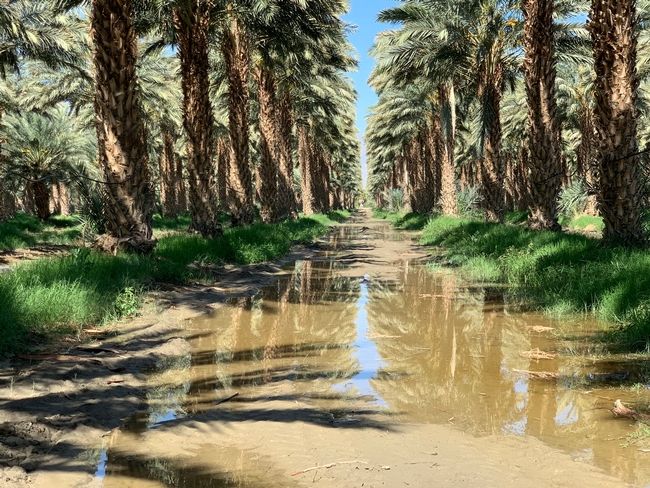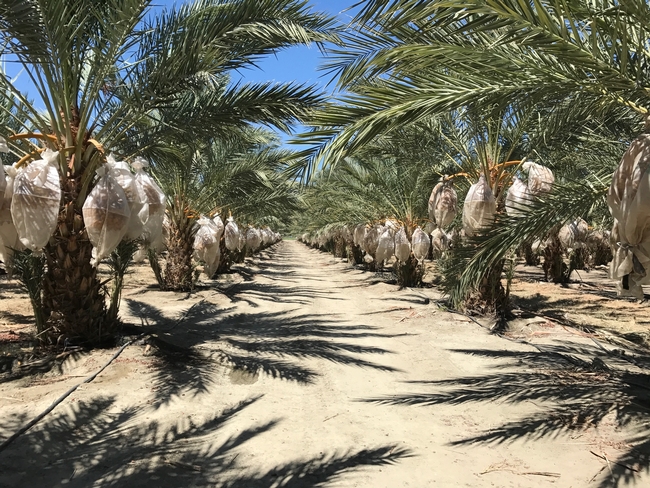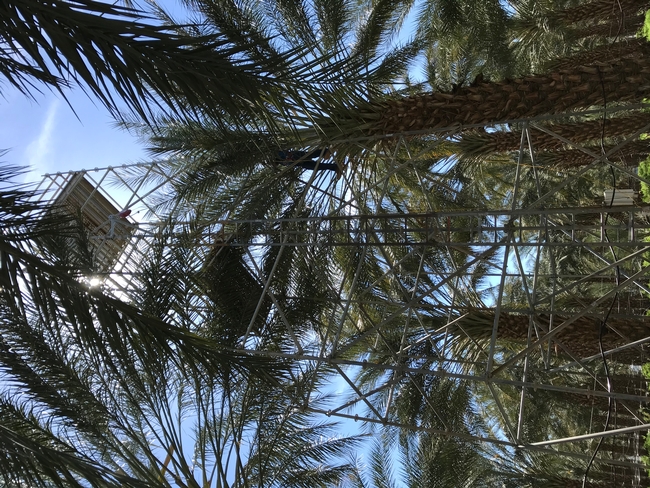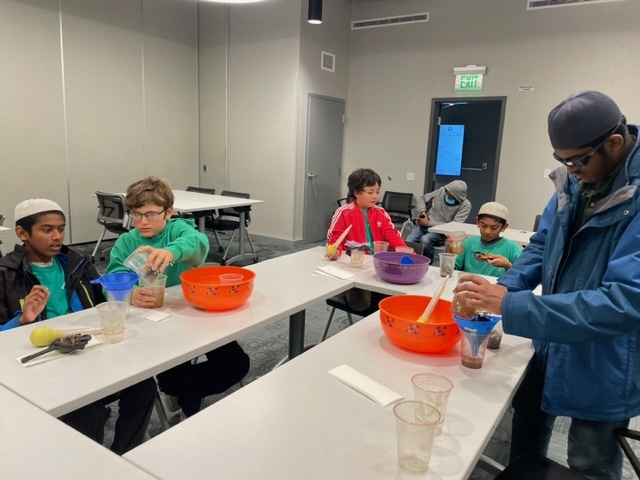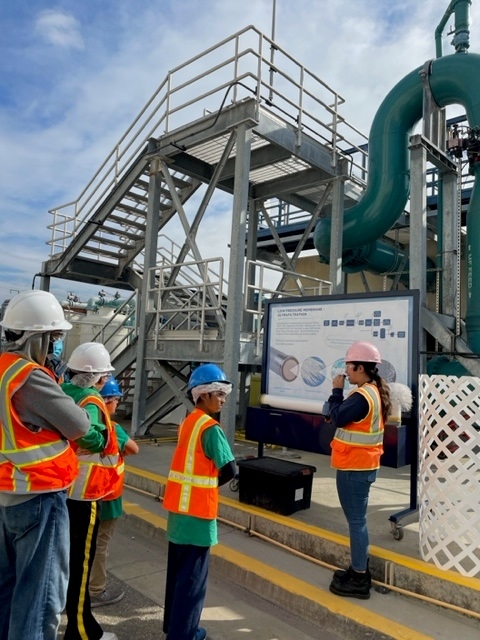
Posts Tagged: conservation
Survey request re on-farm wildflower strips and conservation measures
A colleague and a graduate student at Cornell University are conducting a survey to assess grower attitudes towards establishing wildflower strips as part of conservation programs and asked me to share the survey link to broaden the response to include California growers. From the Cornell team: We...
Art Shapiro: Sharing Information on Monarch Butterflies
UC Davis distinguished professor emeritus Art Shapiro, who's been monitoring the butterfly populations of central California since 1972, discussed his work at the Bohart Museum of Entomology recent open house on monarchs. He points out that he is a Lepidopterist but "not a monarch...
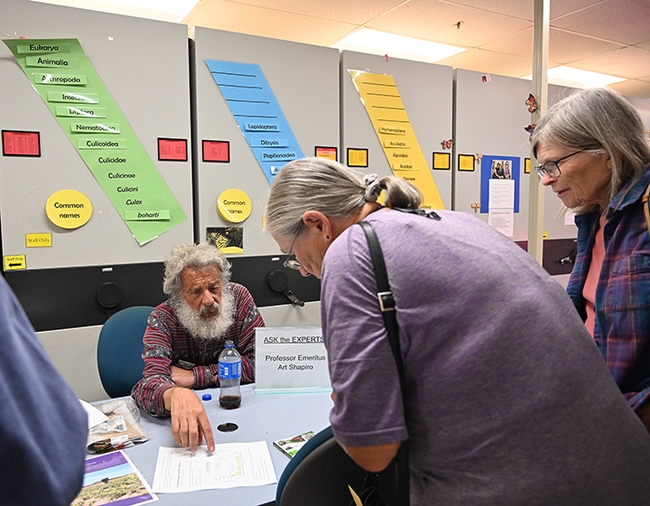
UC Davis distinguished professor emeritus Art Shapiro explains some of his research documentation at the Bohart Museum of Entomology open house on monarchs. (Photo by Kathy Keatley Garvey)
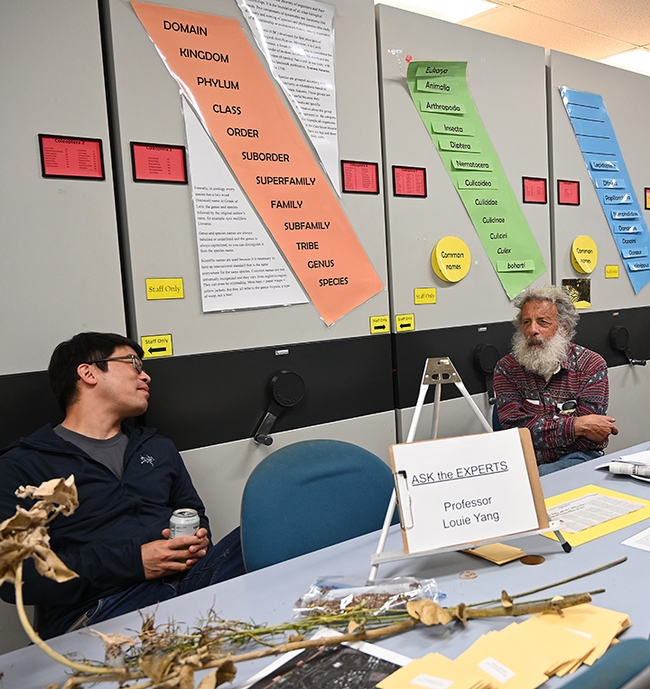
Professor Louie Yang (left) of the UC Davis Department of Entomology and Nematology, chats with UC Davis distinguished professor emeritus Art Shapiro of the Department of Evolution and Ecology during the Bohart Museum's open house on monarchs. (Photo by Kathy Keatley Garvey)
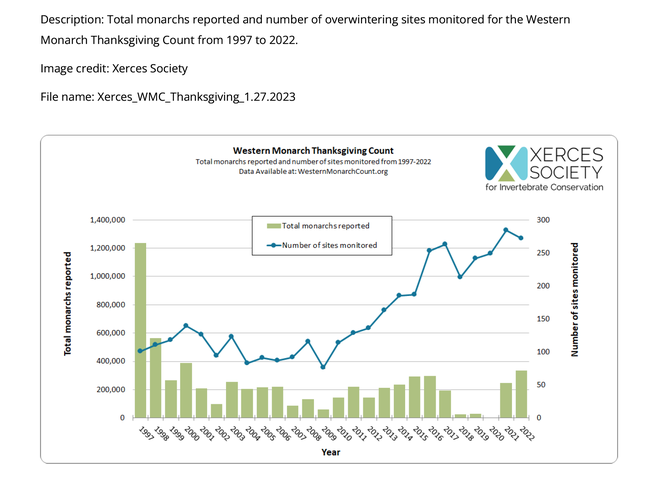
This document provided by Xerces Society of Invertebrate Conservation shows the number of monarchs overwintering along the California coast since 1997. Source: its annual Thanksgiving season count.
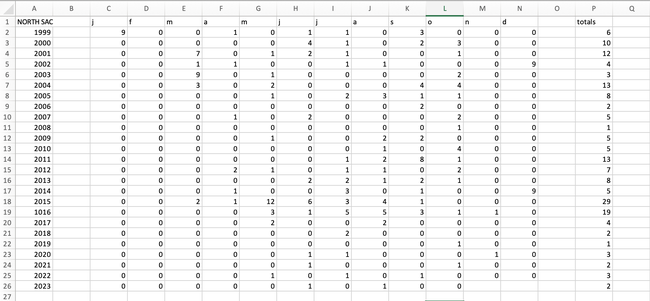
These are the monarch sightings that UC Davis distinguished professor Art Shapiro has recorded in his North and West Sacramento monitoring sites since 1999.
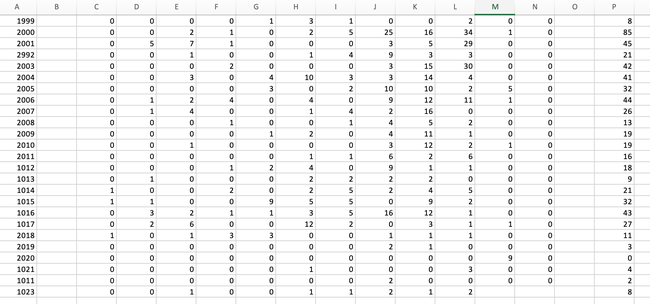
These are the monarch sightings that UC Davis distinguished professor Art Shapiro has recorded in his Rancho Cordova and Suisun monitoring sites since 1999.
UC Davis Professor Louie Yang: On Conserving the Western Monarch Population
"Recent studies have continued to shed light on the ecology of monarch butterflies (Danaus plexippus) in western North America. These studies have documented a declining overwintering population over several decades, punctuated by unexpected variability in recent years. Understanding this...
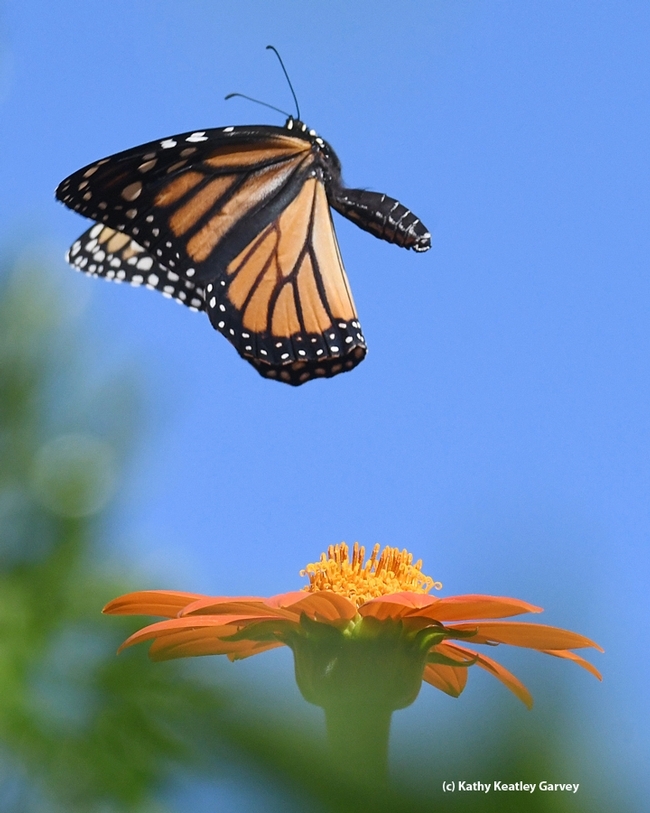
A monarch leaving a Mexican sunflower, Tithonia rotundifola. This image was taken in a pollinator garden in Vacaville. (Photo by Kathy Keatley Garvey)
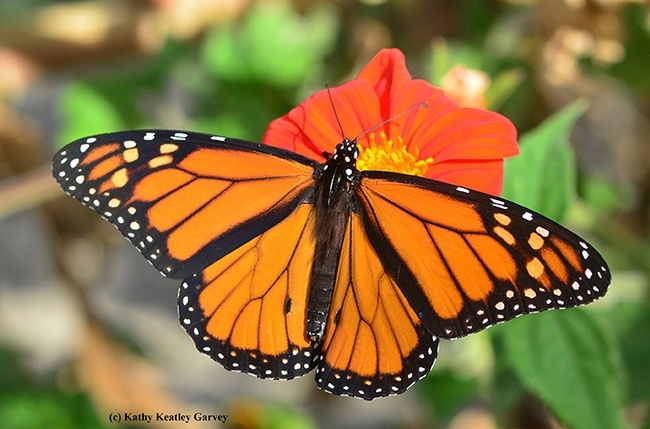
A male monarch nectaring on a Mexican sunflower, Tithonia rotundifola, in Vacaville. (Photo by Kathy Keatley Garvey)
Date palm irrigation research provides economic, environmental benefits
Historically, date palms are grown along riverbeds or in areas with groundwater because they require an abundance of water to produce a good crop. Unlike lettuce or table grapes, date palms are deceptive in that they do not immediately wilt if underwatered. Eventually, however, the lack of water hurts yields and fruit quality.
The default for date growers is to apply excessive water, but doing so is neither economically nor environmentally sound. To help growers, Ali Montazar, UC Cooperative Extension irrigation and water management advisor for Imperial, Riverside and San Diego counties, has developed knowledge that enables growers in the region to establish irrigation guidelines they can use with confidence.
“Water issues in California's desert are very different than in the Central Valley,” said Montazar. “There is no groundwater to recharge so growers in the desert only have the Colorado River.”
Since 2019, Montazar has been focused on irrigation management for date palms in the Coachella Valley, the largest producer of dates in the United States. Montazar's research identifies how much water is needed for the crop and the best water delivery method according to location, soil type and conditions, and date cultivars.
“Dates require a lot of heat and light, which is why they do well in the desert. But they also need a fair amount of irrigation,” said Robert Krueger, a U.S. Department of Agriculture horticulturist and Montazar's co-author of a paper on date palm irrigation management.
Much of what we know about date palm production comes from the Middle East, which has a climate similar to the low desert of California. “That information is from many, many years ago though,” explained Montazar, whose research shows that drip irrigation cannot be the only form of irrigation for date palms.
“Ali is the first to really look at micro-sprinklers and flood irrigation for date palms,” said Krueger, adding that the other advantage of Montazar's research is that it prepares growers for production during times of reduced water supply.
Albert Keck, president of Hadley Date Gardens, Inc. and chairman of the California Date Commission, described Montazar's research efforts as “subtle yet incredible and profound,” adding that his findings not only benefit other farmers but also cities relying on water from the Colorado River.
Keck, one of the largest date growers in California, is well aware of how disruptive, expensive and time-consuming irrigation for date palms can be. Montazar has enabled growers like Keck to irrigate less without sacrificing yield or quality.
“Ali might save us a tiny percentage of the amount of water we're using. It might be a 5 or 10% savings. It doesn't seem like much, but it's an incremental improvement in efficiency,” said Keck. “And if you add all of these improvements up, say, along the U.S. Southwest, then that has a pretty profound impact.”
Montazar recommends that date growers in his region use a combination of drip and two to three flood irrigation events to manage salinity levels derived from the Colorado River. “We cannot maintain salinity issues over time if we're only relying on drip irrigation in date palms,” explained Montazar.
Flood irrigation pushes the salts below the root zone, when they would otherwise build up within the root zone preventing efficient water uptake. It also aids in refilling soil profiles quickly and more effectively since drip has a lower capacity of delivering sufficient water.
“Growers know what they need to water their crop within a broader parameter. But Ali has narrowed that window and helped us become more precise with our irrigation,” Keck said. “There's still room for improvement but we're spending less money, wasting less time and using less water now, and we're still getting the same positive results.”
Currently,Montazar is collaborating with the California Date Commission on developing guidelines for best irrigation management practices in the desert for date palms, which should be available by the end of 2023. These guidelines are based on a four-year data set from six monitoring stations and extensive soil and plant samples from commercial fields located in theCoachella Valley, Imperial Valley and near Yuma, Arizona. Additionally, Montazar is working to quantify how water conservation impacts growers economically.
“Growers from United Arab Emirates, Egypt, Tunisia and Mexico have already reached out asking for this information,” Montazar said, while reflecting on a presentation he made to a group of international date growers in Mexico late last year.
To read the paper on date palm irrigation, published in MDPI's Water journal, visit: https://www.mdpi.com/2073-4441/12/8/2253.
Los Angeles 4-H program cultivates future generation of water stewards
Ibrahim Yaaseen, member of the Palos Verdes Peninsula (PVP) 4-H club, grabs a hard hat and places it on top of his head. He then reaches for a bright orange safety vest and goggles to complete his safety gear outfit before joining the rest of his club members who are dressed the same.
The 4-H Youth Development Program of Los Angeles is already thinking about the future of water management and turned to the West Basin Municipal Water District in El Segundo to gain a deeper understanding of the precious resource we often take for granted.
The University of California 4-H Youth Development Program is managed through local Cooperative Extension offices. Through hands-on learning experiences, 4-H empowers youth to reach their full potential and enables them to build self-esteem, connect with their community and emerge as leaders.
Dee Keese, community club leader for the PVP 4-H club, coordinated an exclusive and interactive tour of West Basin's Edward C. Little Water Recycling Facility for the club's monthly marine biology meeting in December 2022.
Eager to inspire a stronger appreciation for water, Janel Ancayan, the West Basin's education coordinator, challenged the youth to build their own water filters using materials including fabric, a strainer, and a funnel. Since no specific directions were given, the activity challenged each student's science and engineering skills, such as carrying out an investigation, designing a solution, and communicating information with team members.
During the tour, students saw firsthand the impressive equipment and essential staff members that help to produce nearly 40 million gallons of recycled water each day. At the end of the day, students left with a deeper understanding of water resources and felt empowered to do their part to conserve water sources.
“We learned that recycling water helps to conserve our limited water supply and improves the environmental condition of our coastal waters,” said Yaaseen. “We ultimately learned a great deal about how to conserve water for future generations and that water conservation is one of the most important elements in combating climate change.”
Though Keese has volunteered as community club leader for 48 years, this is only the second time she has partnered with the West Basin. “I like to mix it up,” she said. “I'm always looking for community organizations and local businesses to partner with because these are places that the kids will likely interact with since they're nearby.”
Regardless, it's leaders like Keese and programs like 4-H that encourage water stewards like Ancayan. “I'm always so humbled and inspired when teachers make it a point to come out and visit our facility. In Southern California especially, [water] is not something we think about,” Ancayan said.
Even in a drought, water continues to flow from our faucets allowing us to shower, wash dishes or water the lawn. It's no wonder why water conservation is not always top of mind, especially for consumers. Educating the public, and targeting the younger generation, however, is a great start to prepare for the future.
West Basin offers a variety of educational programs that focus on different age groups. Many of them involve hands-on learning like the Teach and Test volunteer program, a partnership with the Surfrider Foundation, where high school students test samples of coastal water for bacteria, and then publicly share their findings to contribute to water quality monitoring in the area.
According to Yaaseen, the time spent with Ancayan at the West Basin was “one-of-a-kind” and provided a “golden opportunity” to learn why water recycling facilities are important. Ancayan hopes that her time spent with students ultimately influences them to consider a career in water.
“It's not a glamorous job but I'm really passionate about the next generation of water workers,” she said. “I hope that once they see the engineering, the excitement of these scientists that work in our laboratory and everything in between, that they start to think about water as a future career path.”
For those interested in joining 4-H, visit https://4h.ucanr.edu/Members/
To read this story in Spanish, please visit:
Programas 4-H de Los Ángeles forman a la futura generación de administradores de los recursos hídricos
https://ucanr.edu/blogs/blogcore/postdetail.cfm?postnum=57063

